Applications in MS, neurodegenerative disease and epilepsy
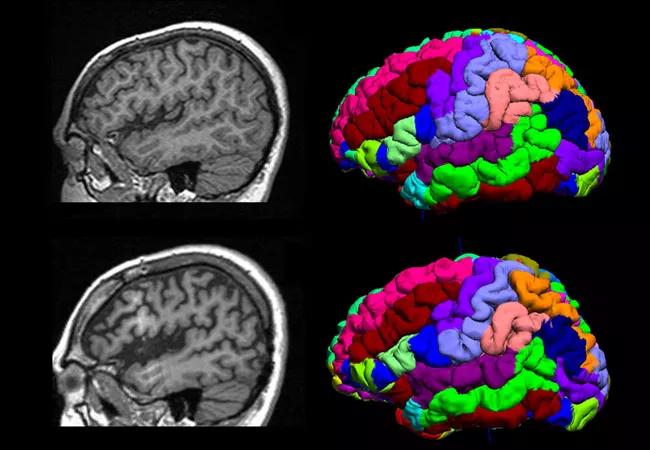
By Kunio Nakamura, PhD; James B. Leverenz, MD; and Z. Irene Wang, PhD
Cleveland Clinic is a non-profit academic medical center. Advertising on our site helps support our mission. We do not endorse non-Cleveland Clinic products or services. Policy
Important MRI characteristics of neurological diseases can be obtained from volumetric analysis of brain MRI. Current technologies allow for volumetric analysis to achieve realistic rendering of the cortical surface in an accurate and prompt manner. Cleveland Clinic’s Neurological Institute has been applying this technology across multiple subspecialties. A few examples are profiled below.
One of Cleveland Clinic’s long-standing research interests in multiple sclerosis (MS) is volumetric brain analysis. Since our first report in 1999 on brain atrophy in MS using brain parenchymal fraction,1 Cleveland Clinic’s Lerner Research Institute and Mellen Center for Multiple Sclerosis have continued to perform quantitative measurement of whole-brain atrophy in both clinical trials and research studies. The method has been applied in more than 20 separate clinical and research studies to date on over 40,000 MRIs collected here and from other centers.
We have also developed methods for measuring cortical thinning, i.e., the cortical longitudinal atrophy detection algorithm (CLADA),2 and for measuring gray matter atrophy using pairwise Jacobian integration.3 These methods are particularly suited for longitudinal studies in that they are designed to detect subtle differences in brain MRIs and quantify the structural change.
More recently, we have studied thalamic atrophy, which occurs early in the course of MS. To this end, we have created a large normative trajectory of thalamic volumes from over 1,500 neurologically normal subjects using publicly available databases to more accurately detect abnormal thalamic volumes4 (Figure 1).
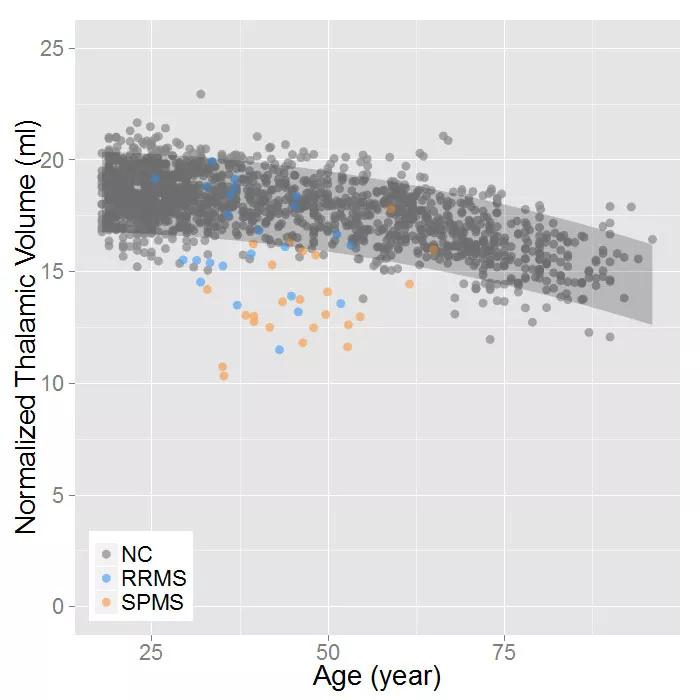
Figure 1. Trajectory of normalized thalamic volumes of 1,552 healthy controls from various publicly available databases and thalamic volumes of patients with MS. Large normative datasets allow more accurate detection of abnormal thalamic volumes. NC = normal controls; RRMS = relapsing-remitting multiple sclerosis; SPMS = secondary progressive multiple sclerosis.
Cleveland Clinic Lou Ruvo Center for Brain Health is a three-site program that accommodates more than 14,000 patient visits annually at locations in Cleveland, Ohio; Las Vegas, Nevada; and Weston, Florida. In addition to standard MRI imaging, all scans performed by our center can have automated post-imaging volumetric measurements to accurately assess for atrophy and other characteristics, such as severity of white matter changes. We also employ amyloid imaging, FDG-PET and both qualitative and quantitative dopamine transporter imaging (DaTscan™ and DaTQUANT™) (Figure 2).
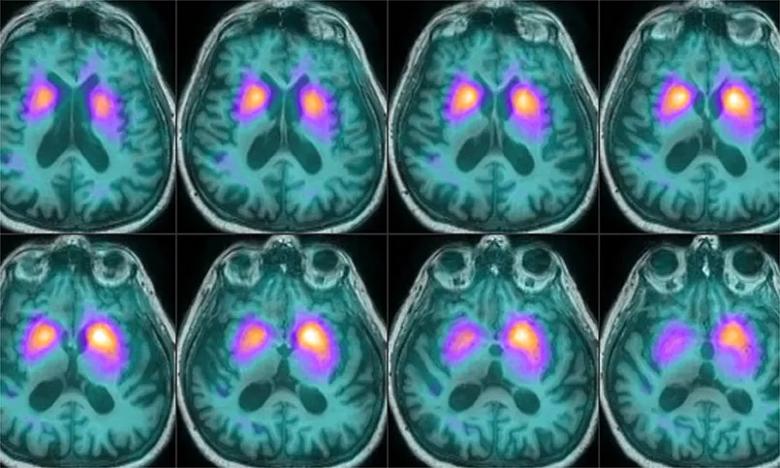
Figure 2. Ioflupane (DaTscan) images of a patient with parkinsonian symptoms, including tremor. The decreased ioflupane tracer uptake on the left side of the scans indicates depletion of dopamine transporters in the striatum, consistent with a neurodegenerative process. Image courtesy of Mykol Larvie, MD, Cleveland Clinic.
We frequently supplement findings from these advanced imaging modalities with cerebrospinal fluid analysis to confirm atypical Alzheimer’s disease (e.g., early onset, atypical clinical syndrome) and to diagnose rare neurological disorders such as paraneoplastic and prion disease. Imaging findings are frequently integrated in many of the 25-plus active clinical trials in the Lou Ruvo Center for Brain Health research program. Distinctive offerings include clinical trials in pre-symptomatic at-risk patients, repurposing of medications, and treatments for non-Alzheimer’s dementias such as Lewy body disease.
At Cleveland Clinic’s Epilepsy Center, one recent success with MRI volumetric analysis has been achieved in the diagnosis prediction of patients with epilepsy and Rasmussen’s encephalitis (RE).5 Over the past decade, MRI has become an increasingly important tool in the diagnosis of RE, as well as in assessing disease progression and therapeutic effectiveness. We set out to examine how volumetric measures can help predict RE — i.e., whether the extent of atrophy on MRI can be quantified to predict the probability that a patient with suspected RE truly has RE.
In our study, we included 42 MRI scans from a group of pediatric patients with RE, and performed automated MRI volumetric measurements (one example is shown in Figure 3). Ratios of volumes from the affected hemisphere divided by those from the unaffected hemisphere (such as interhemispheric ratio) were used as input to a logistic regression classifier that was trained to separate patients from controls.

Figure 3. Serial MRIs from a patient with Rasmussen’s encephalitis (RE) — taken at age 10 (top row) and age 17 (bottom row) — and the corresponding volumetric analysis results from BrainSuite software (brainsuite.org). The MRI scans in the left column are T1w images that were used as input to the analysis. Automatic segmentation results are shown on the right; different colors denote different brain anatomical regions. Pronounced atrophy can be observed at the perisylvian region. The interhemispheric ratio showed a marked decrease from 0.79 to 0.70 over the course of seven years of disease. Republished with permission of the American Society of Neuroradiology from Wang et al.,5 AJNR Am J Neuroradiol. 2016;37:2348-2355, ©2016; permission conveyed through Copyright Clearance Center Inc.
Our study showed that automated quantitative volumetric analysis provides accurate separation of RE patients from normal controls and non-RE epilepsy patients (Figure 4) and thus may assist in the diagnosis of RE.

Figure 4. Performance of the classifier constructed using the interhemispheric ratio. Patients with Rasmussen’s encephalitis (RE) are denoted with dots, and non-RE epilepsy controls are denoted with crosses. True positives (TP) are patients correctly identified as patients by the classifier. True negatives (TN) are controls correctly identified as controls. False positives (FP) are controls incorrectly identified as patients. False negatives (FN) are patients incorrectly identified as controls. The vast majority of cases were correctly classified (TP and TN). Republished with permission of the American Society of Neuroradiology from Wang et al.,5 AJNR Am J Neuroradiol. 2016;37:2348-2355, ©2016; permission conveyed through Copyright Clearance Center Inc.
Used in relevant clinical settings, such as initial and follow-up investigations in epilepsy patients with suspected RE, the probability curve that was estimated (see our study5) can potentially provide an objective measure to solidify the confidence of an RE diagnosis. Additionally, with the methodology established in this paper, such patients can be studied prospectively by comparing volumetric findings with surgical pathology/biopsy.
Dr. Nakamura (nakamuk@ccf.org) is a project scientist in the Department of Biomedical Engineering, Cleveland Clinic Lerner Research Institute.
Dr. Leverenz (leverej@ccf.org) is Director of Cleveland Clinic Lou Ruvo Center for Brain Health, Cleveland.
Dr. Wang (wangi2@ccf.org) is a staff scientist in Cleveland Clinic’s Epilepsy Center and joint staff in the Department of Biomedical Engineering.

Taking virtual reality-integrated technology from silver screen to clinical laboratory

Novel collaboration is underway to foster innovation – and a real-world invention

Strong performance from early models heralds eventual reshaping of care
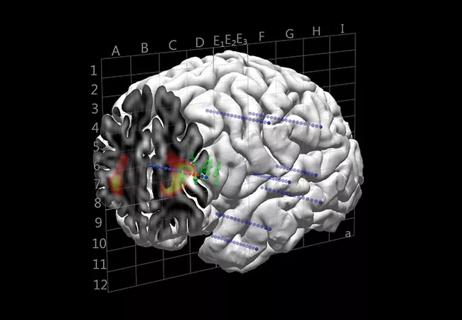
Novel approach is improving presurgical evaluation
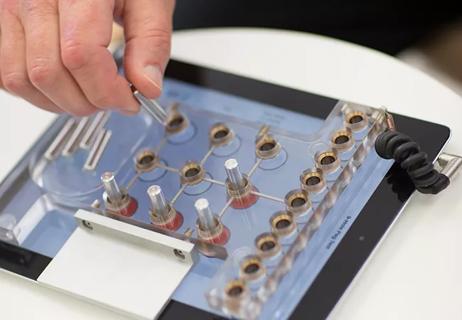
Important progress toward predictive analytics in MS and PD

A quick review of 3D-printed models, intrasaccular flow disruption and flow diverter stenting

Early results with ‘HeRe We Arts’ spur testing in a randomized trial
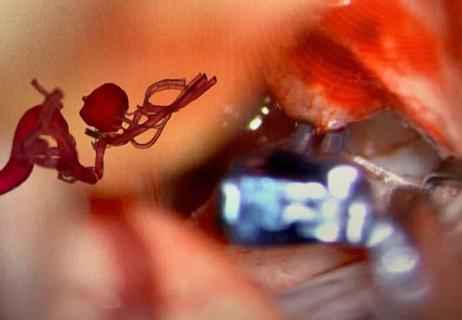
One of first reported uses of the technology for a cerebrovascular malformation